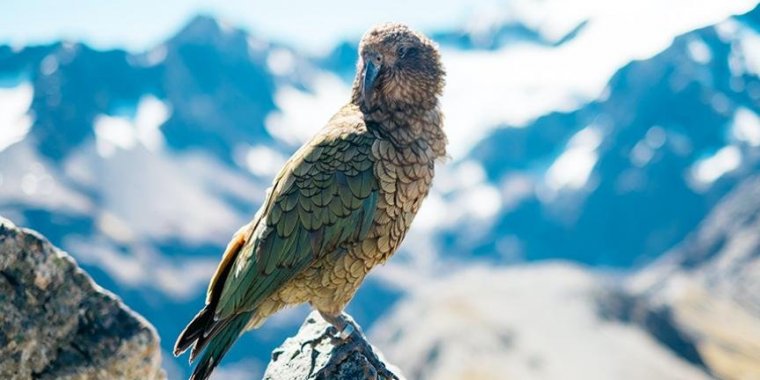| News / Science News |
Birds and mammals evolve faster if their home is rising
The rise and fall of Earth’s land surface over the last three million years shaped the evolution of birds and mammals, a new study has found, with new species evolving at higher rates where the land has risen most.

Wild Kea, New Zealand, Photo: Pablo Heimplatz/Unsplash
Researchers at the University of Cambridge have combined reconstructions of the Earth’s changing surface elevations over the past three million years with data on climate change over this timeframe, and with bird and mammal species’ locations.
Their results reveal how species evolved into new ones as land elevation changed - and disentangle the effects of elevation from the effects of climate.
The study found that the effect of elevation increase is greater than that of historical climate change, and of present-day elevation and temperature, in driving the formation of new species – ‘or speciation’.
In contrast to areas where land elevation is increasing, elevation loss was not found to be an important predictor of where speciation happens. Instead, present-day temperature is a better indicator of speciation in these areas.
“Often at the tops of mountains there are many more unique species that aren’t found elsewhere. Whereas previously the formation of new species was thought to be driven by climate, we’ve found that elevation change has a greater effect at a global scale,” said Dr Andrew Tanentzap in the University of Cambridge’s Department of Plant Sciences, senior author of the paper.
As land elevation increases, temperature generally decreases and habitat complexity increases. In some cases, for example where mountains form, increasing elevation creates a barrier that prevents species moving and mixing, so populations become reproductively isolated. This is the first step towards the formation of new species.
The effect of increasing elevation on that rate of new species formation over time was more pronounced for mammals than for birds; the researchers think this is because birds can fly across barriers to find mates in other areas.
Birds were affected more by present-day temperatures; in birds, variation in temperature creates differences in the timing and extent of mating, risking reproductive isolation from populations of the same species elsewhere.
Until now, most large-scale studies into the importance of topography in generating new species have only considered present-day land elevation, or elevation changes in specific mountain ranges.
“It’s surprising just how much effect historical elevation change had on generating the world’s biodiversity – it has been much more important than traditionally studied variables like temperature. The rate at which species evolved in different places on Earth is tightly linked to topography changes over millions of years,” said Dr Javier Igea in the University of Cambridge’s Department of Plant Sciences, first author of the paper.
He added: “This work highlights important arenas for evolution to play out. From a conservation perspective these are the places we might want to protect, especially given climate change. Although climate change is happening over decades, not millions of years, our study points to areas that can harbour species with greater potential to evolve.”
The researchers say that as the Earth’s surface continues to rise and fall, topography will remain an important driver of evolutionary change. (University of Cambridge)





